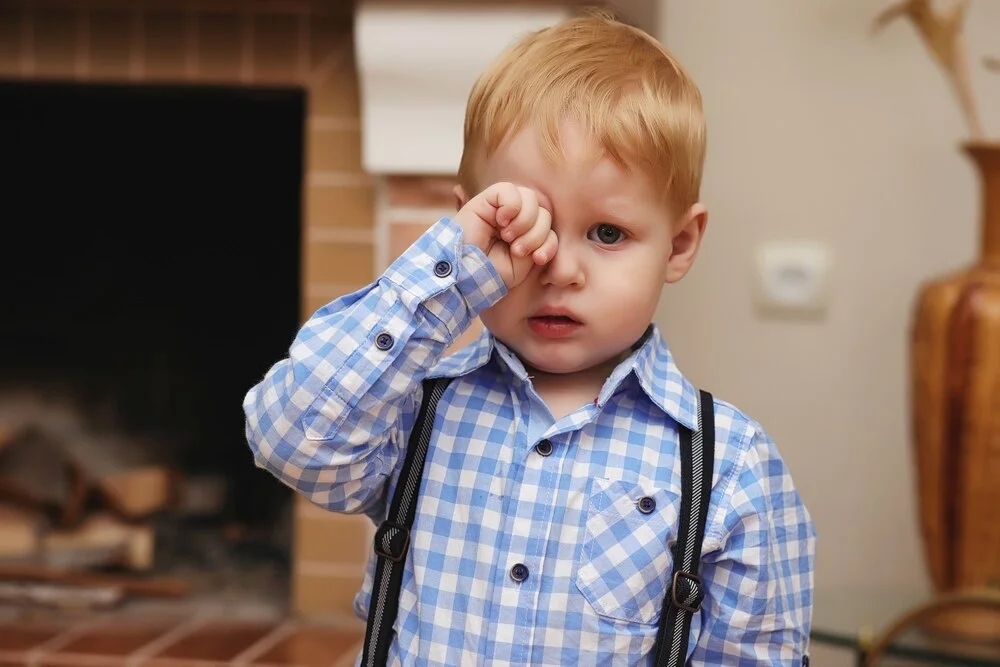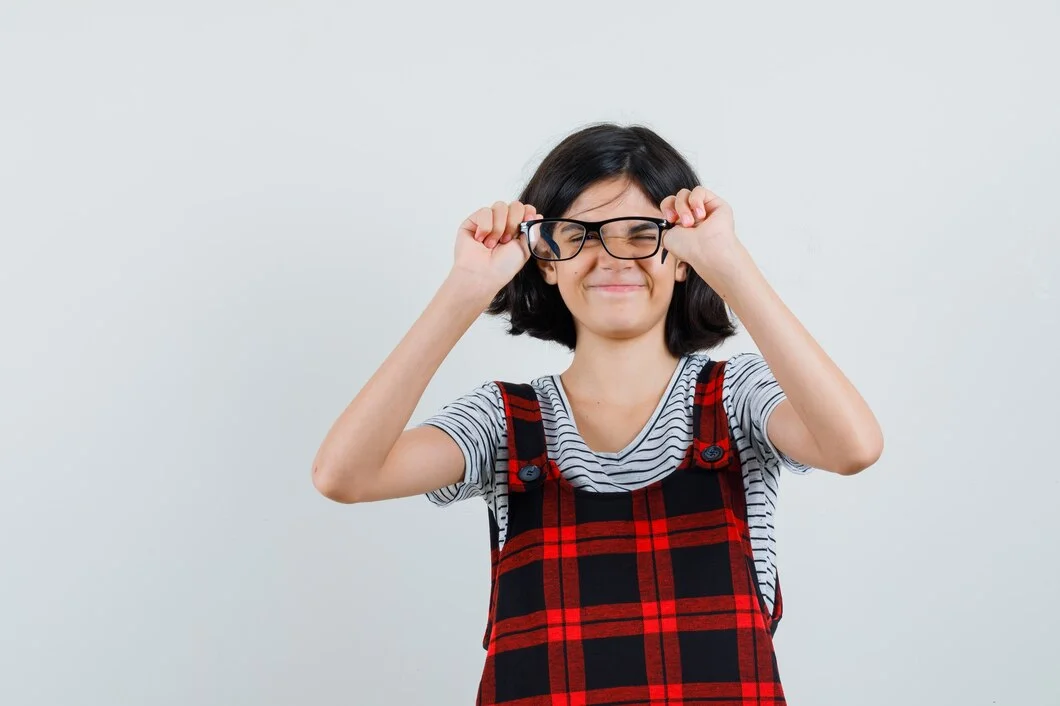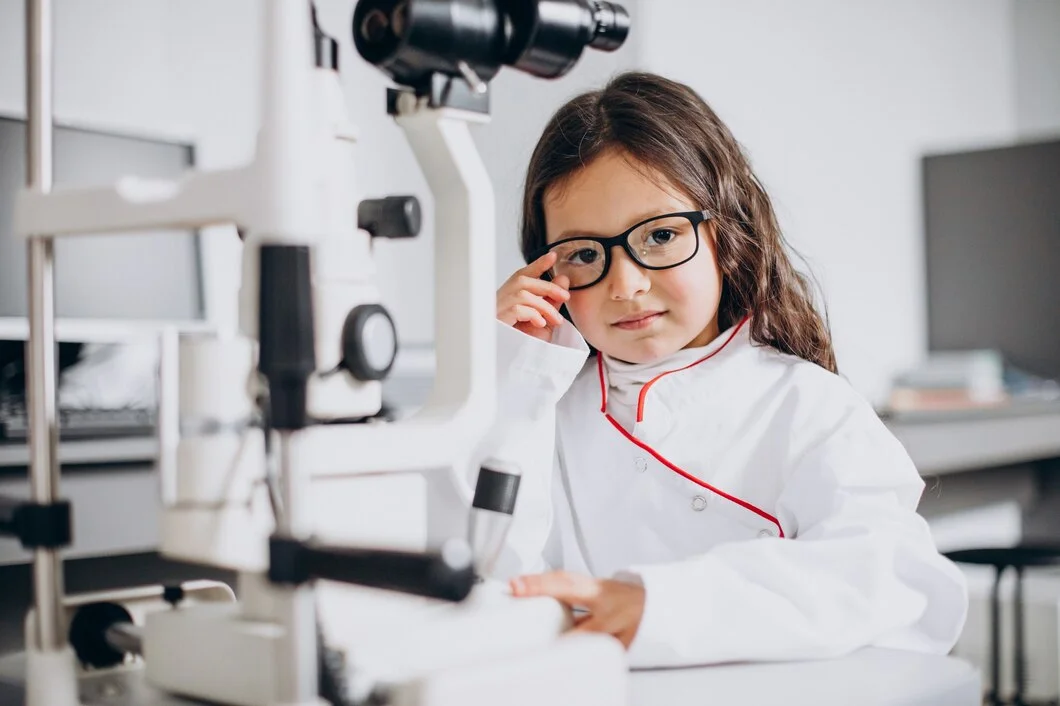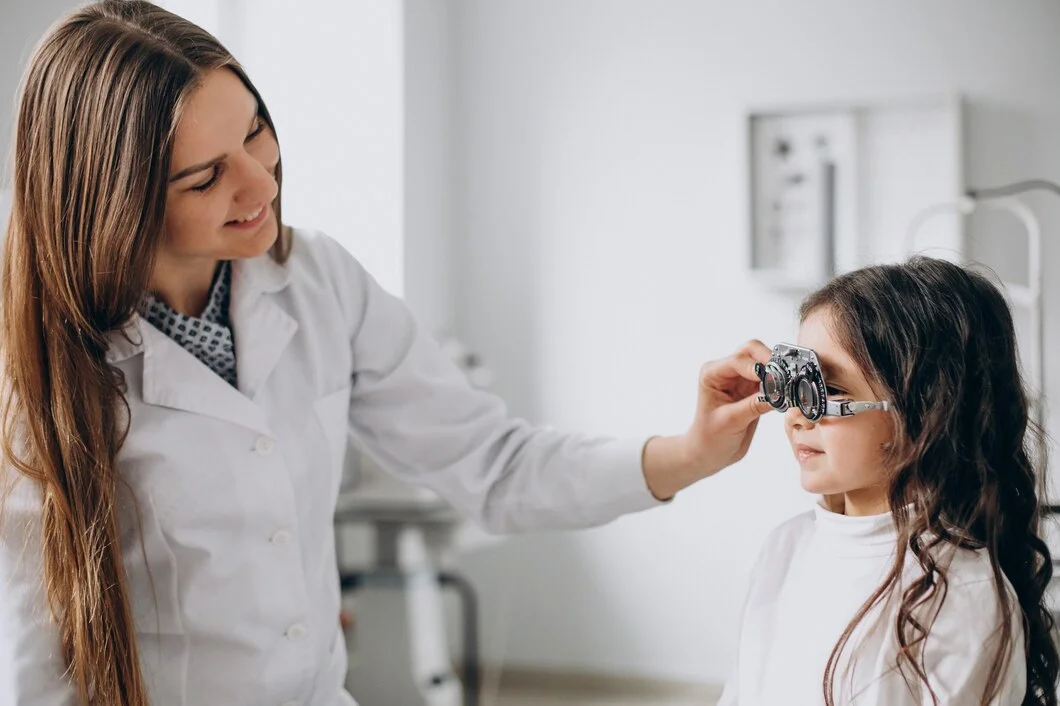As the air cools and leaves begin to change, many parents look forward to fall activities like pumpkin picking, outdoor sports, and cozy weekends. But for some children, autumn also brings a less pleasant companion: allergies in autumn. Watery, itchy eyes and constant rubbing are not just seasonal annoyances. They can interfere with your child’s ability to see clearly and comfortably.
At Elite Eye Care, we often see a rise in visits from parents concerned about their children’s vision when the weather changes. Understanding how fall eye allergies work and recognizing early symptoms can help prevent long-term eye irritation and protect your child’s visual health.

How Allergies in Autumn Affect Your Child’s Eyes
Allergies in autumn are typically triggered by airborne particles such as pollen, mold spores, and dust mites. While these allergens are most often associated with sneezing and nasal congestion, they also directly affect the eyes. When allergens meet the surface of the eye, they trigger an immune response that causes redness, tearing, and itching. This is known as allergic conjunctivitis. This condition is especially common in children because their eyes and immune systems are still developing.
For many kids, eye allergies in fall worsen during outdoor play or sports. Even indoor environments can contribute, especially if the heating system circulates dust or mold particles. If your child constantly rubs their eyes, squints, or complaints of discomfort, these could be early signs of Fall Eye Allergies that require attention.
Common Symptoms of Fall Eye Allergies in Children
Recognizing the symptoms of fall eye allergies early can make a huge difference in managing your child’s comfort. Typical signs include:
- Red, watery, or itchy eyes fall symptoms
- Frequent rubbing or blinking
- Puffy or swollen eyelids
- Sensitivity to light
- Blurred or fluctuating vision
If these symptoms persist for more than a few days, schedule an eye exam. Sometimes what looks like simple eye allergies in fall could actually be a sign of another condition like dry eye, infection, or vision strain.
Allergy to Eyeglasses: A Hidden Irritant
One surprising cause of eye irritation during fall eye allergies is an allergy to eyeglasses. Some children develop skin reactions to the materials used in their frames or to dust and pollen particles that collect around the rims.
If your child already wears glasses, check whether redness or rashes appear near the temples or bridge of the nose. Regularly cleaning their glasses with a gentle, allergen-free solution can help reduce these issues. For children sensitive to certain materials, hypoallergenic frames can make a big difference in comfort.

How to Protect Your Child’s Eyes from Fall Allergies
Managing allergies in autumn begins with prevention and care. Encourage your child to wash their hands and face after outdoor play, and avoid touching or rubbing their eyes. Using artificial tears can help rinse away allergens and keep the eyes moist.
If your child experiences frequent itchy eyes fall symptoms, consider using an air purifier at home and washing bedding in hot water weekly to remove dust mites. Sunglasses also act as a barrier, protecting the eyes from pollen and debris during outdoor activities.
For persistent or severe symptoms, an eye care professional can prescribe allergy eye drops or recommend other treatments. A comprehensive eye exam will help determine whether allergies affect vision or if other eye conditions may be contributing to discomfort.

When to See an Eye Doctor
Not all eye allergies in fall are mild. If your child’s eyes become very red, painful, or sensitive to light, or if they report changes in vision, it’s time to schedule a visit. Constant rubbing, squinting, or watery eyes that do not improve with home care are clear signs that professional evaluation is needed.
At Elite Eye Care, we specialize in diagnosing and treating Fall Eye Allergies and other vision issues caused by allergies in autumn. Our team can help identify triggers, recommend safe and effective treatments, and ensure your child’s eyes remain healthy throughout the season.

Conclusion
While fall is a favorite season for many, it can be challenging for children who suffer from allergies in autumn. Ignoring the signs of fall eye allergies can lead to discomfort, poor focus in school, and even long-term vision problems.
By recognizing the symptoms early, managing exposure, and consulting a trusted eye specialist, you can keep your child’s vision clear and healthy all season long. If you suspect allergies affect vision in your child, book an appointment with Elite Eye Care today for a comprehensive exam and expert guidance.
FAQs
1. Can allergies affect your vision?
Yes, allergies affect vision by causing inflammation and swelling that lead to blurred sight and discomfort. Persistent allergies in autumn can worsen these effects if left untreated.
2. What are common symptoms of fall eye allergies?
Fall eye allergies often cause itchy eyes to fall symptoms, redness, tearing, and puffiness. Some children may also experience light sensitivity and blurred vision.
3. Can my child be allergic to their eyeglasses?
Yes, some children have an allergy to eyeglasses or to pollen buildup on frames. Cleaning glasses regularly and choosing hypoallergenic materials can help prevent irritation.
4. How can I help my child manage eye allergies in fall?
Encourage regular hand washing, avoid rubbing eyes, and use sunglasses outdoors. For ongoing eye allergies in fall, visit Elite Eye Care for tailored treatment options.
